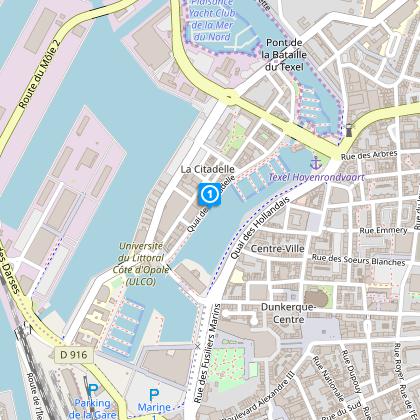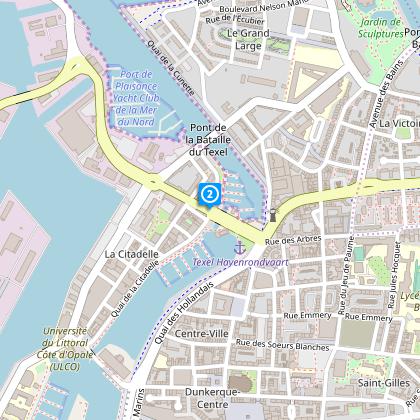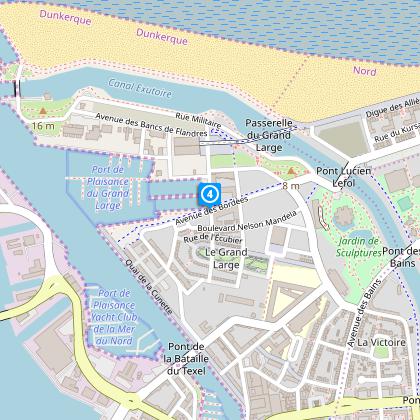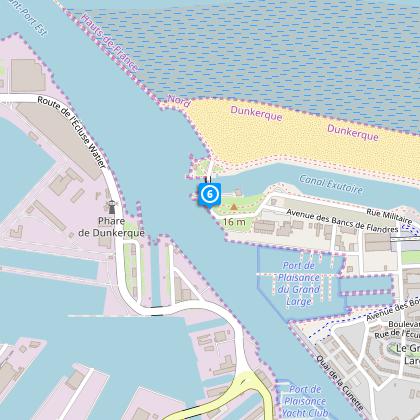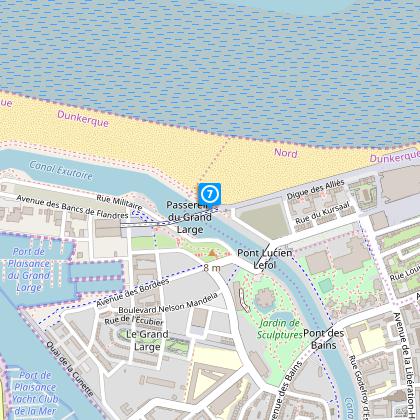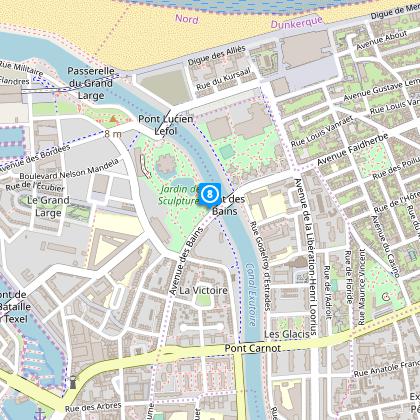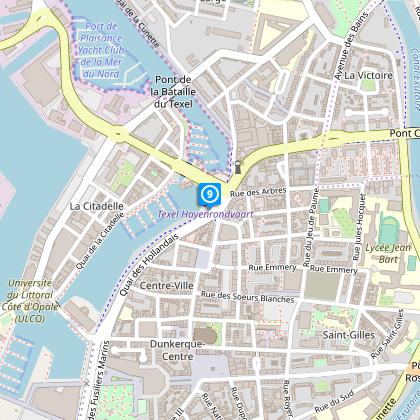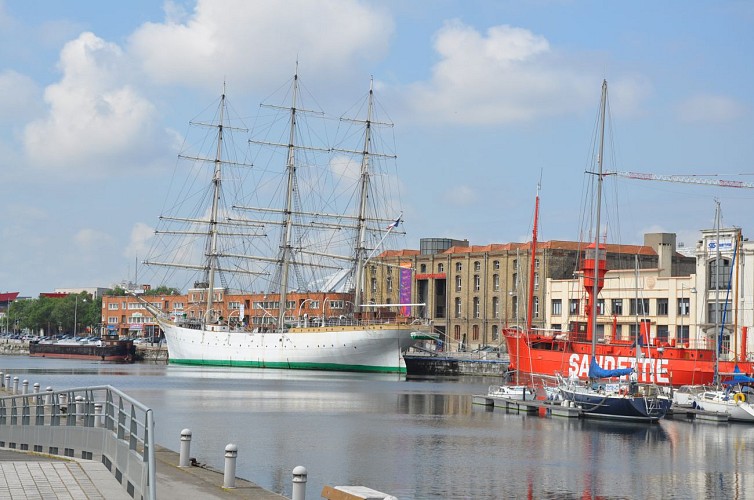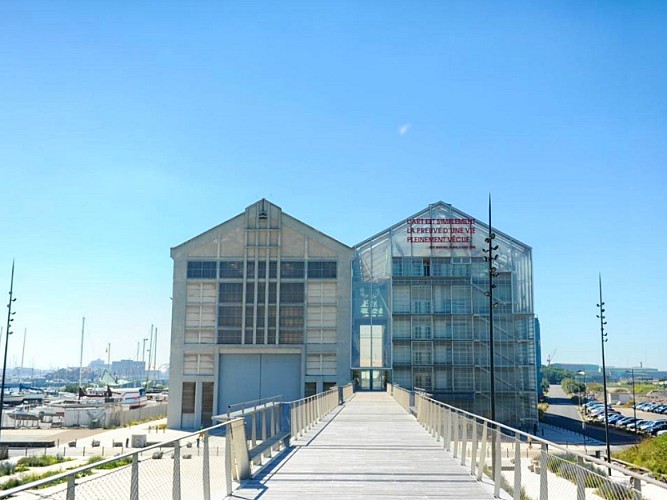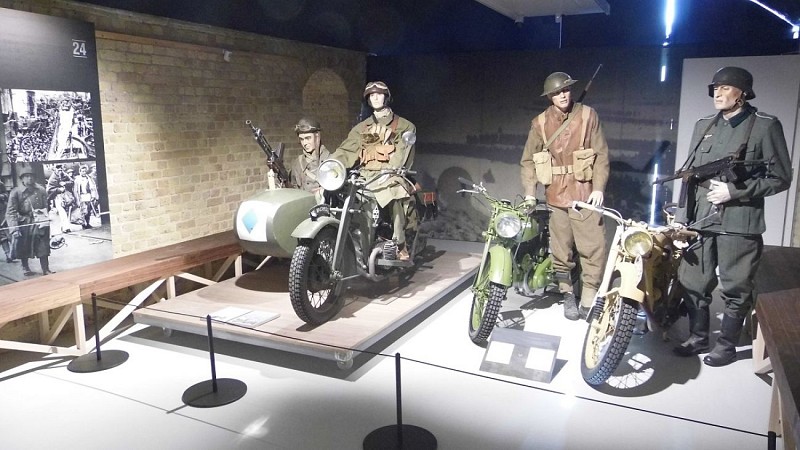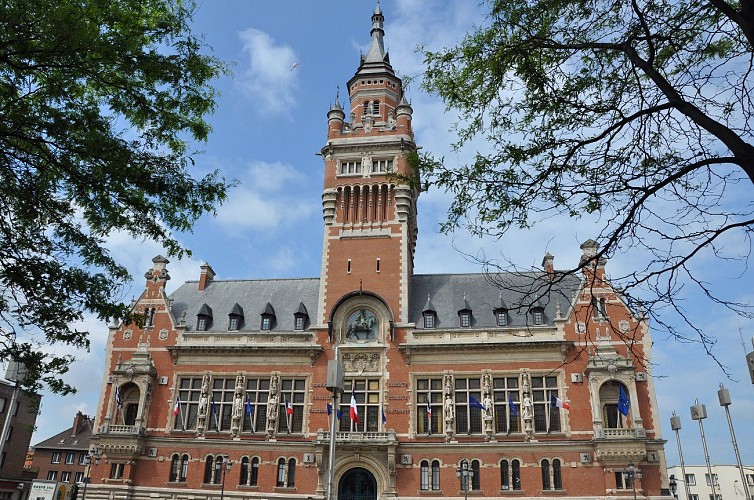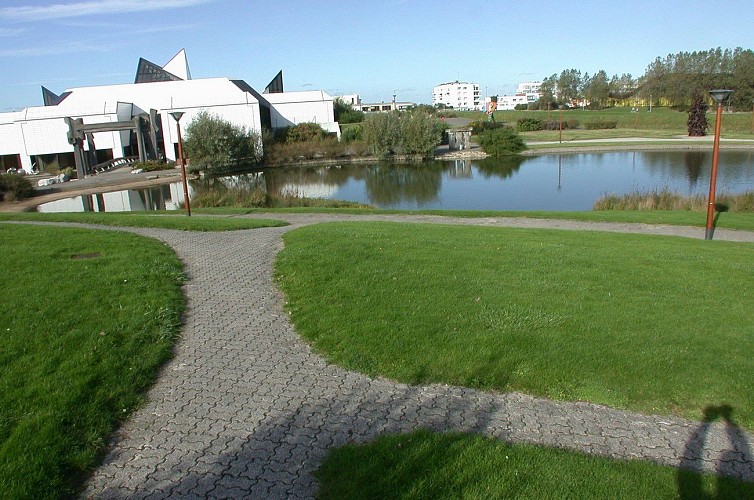Alert
Alerts
Type of practice
Walking
Very easy
2h
Presentation
Map
Steps
Points of interest
Cirkwi brief's
Ratings and reviews
See around
From Dunkirk to Safe Harbor



Credit : Nord Tourisme
The Cirkwi brief
Discover Dunkirk's Maritime Heritage Trail
Setting sail from the Musée Portuaire, this excursion is a voyage through Dunkirk's rich maritime past and present, curated by Nord Tourisme. The journey is an urban exploration that requires keen awareness while crossing streets but promises a captivating immersion into the city’s seafaring soul. It offers a unique combination of historical insights and modern-day navigational challenges, complemented by the inviting ambiance of the historic Citadelle district. This itinerary isn’t just about retracing the steps of dockworkers or admiring model ships; it’s about feeling the pulse of Dunkirk, understanding its pivotal role in international maritime trade, and perhaps, gathering around for the festive spirit of the February carnival, reminiscent of the legendary "fishing in Iceland."
Technical Insights Into Dunkirk Exploration
In technical terms, the Dunkirk Maritime Heritage Trail spans approximately 6.62 kilometers, with an altitude ranging from -2 to 16 meters above sea level. The rout encompasses a total positive and negative elevation change of 161 meters, marking it as moderately challenging for visitors. Signposted with yellow markers, the trail ensures guidance throughout, though it demands a basic level of fitness due to the varied topography and the urban setting which requires careful navigation across streets and along the quayside.
Seasonal Tips for Dunkirk's Route
For those planning to traverse Dunkirk's maritime pathway, it's advisable to gear up according to the season. Spring and autumn present milder weather, ideal for exploring. Summers, though busier, unveil Dunkirk in full bloom, making for a vibrant experience, especially during the July and August beach events. Winter requires warm attire, especially if you wish to partake in the memorable February carnival. Regardless of the season, always ensure safety by adhering to marked paths and street crossings. Remember, the journey is best enjoyed with a sense of adventure and mindfulness towards the urban and maritime surroundings.
Dunkirk: A Historical Tapestry
Dunkirk boasts a tapestry of historical and cultural significance within the Nord department and Hauts-de-France region. Known for its heroic role during World War II, the city's maritime legacy dates back even further, intertwined with the "fishing in Iceland" traditions that shaped its community. Beyond its strategic military importance, Dunkirk has evolved into a hub for international trade, embodying the spirit of resilience and innovation. Its history, from the Musée Portuaire narrative to the bustling docks, reflects the dynamic evolution of maritime commerce and culture on the northern French coast.
Dunkirk's Climate and Visiting Tips
Dunkirk's Coastal Climate Insights
Dunkirk experiences a temperate maritime climate, characterized by mild winters and cool summers, thanks to its coastal location in the Hauts-de-France region. Rainfall is distributed fairly throughout the year, making every season suitable for a visit. However, for the optimal exploration experience, consider the late spring to early autumn period, from May to September. During these months, the weather is generally more stable and warmer, perfect for outdoor activities and enjoying Dunkirk’s maritime heritage to the fullest.
Setting sail from the Musée Portuaire, this excursion is a voyage through Dunkirk's rich maritime past and present, curated by Nord Tourisme. The journey is an urban exploration that requires keen awareness while crossing streets but promises a captivating immersion into the city’s seafaring soul. It offers a unique combination of historical insights and modern-day navigational challenges, complemented by the inviting ambiance of the historic Citadelle district. This itinerary isn’t just about retracing the steps of dockworkers or admiring model ships; it’s about feeling the pulse of Dunkirk, understanding its pivotal role in international maritime trade, and perhaps, gathering around for the festive spirit of the February carnival, reminiscent of the legendary "fishing in Iceland."
Technical Insights Into Dunkirk Exploration
In technical terms, the Dunkirk Maritime Heritage Trail spans approximately 6.62 kilometers, with an altitude ranging from -2 to 16 meters above sea level. The rout encompasses a total positive and negative elevation change of 161 meters, marking it as moderately challenging for visitors. Signposted with yellow markers, the trail ensures guidance throughout, though it demands a basic level of fitness due to the varied topography and the urban setting which requires careful navigation across streets and along the quayside.
Seasonal Tips for Dunkirk's Route
For those planning to traverse Dunkirk's maritime pathway, it's advisable to gear up according to the season. Spring and autumn present milder weather, ideal for exploring. Summers, though busier, unveil Dunkirk in full bloom, making for a vibrant experience, especially during the July and August beach events. Winter requires warm attire, especially if you wish to partake in the memorable February carnival. Regardless of the season, always ensure safety by adhering to marked paths and street crossings. Remember, the journey is best enjoyed with a sense of adventure and mindfulness towards the urban and maritime surroundings.
Dunkirk: A Historical Tapestry
Dunkirk boasts a tapestry of historical and cultural significance within the Nord department and Hauts-de-France region. Known for its heroic role during World War II, the city's maritime legacy dates back even further, intertwined with the "fishing in Iceland" traditions that shaped its community. Beyond its strategic military importance, Dunkirk has evolved into a hub for international trade, embodying the spirit of resilience and innovation. Its history, from the Musée Portuaire narrative to the bustling docks, reflects the dynamic evolution of maritime commerce and culture on the northern French coast.
Dunkirk's Climate and Visiting Tips
Dunkirk's Coastal Climate Insights
Dunkirk experiences a temperate maritime climate, characterized by mild winters and cool summers, thanks to its coastal location in the Hauts-de-France region. Rainfall is distributed fairly throughout the year, making every season suitable for a visit. However, for the optimal exploration experience, consider the late spring to early autumn period, from May to September. During these months, the weather is generally more stable and warmer, perfect for outdoor activities and enjoying Dunkirk’s maritime heritage to the fullest.
Automatically generated.
IGN cards

2302SB - DUNKERQUE GRAVELINES
Editor : IGN
Collection : TOP 25 ET SÉRIE BLEUE
Scale : 1:25 000
13.90€

101 LILLE CALAIS LE TOUQUET-PARIS-PLAGE PNR DES CAPS ET MARAIS D'OPALE
Editor : IGN
Collection : TOP 100
Scale : 1:100 000
8.40€

D59-62 NORD PAS-DE-CALAIS
Editor : IGN
Collection : CARTES DÉPARTEMENTALES IGN
Scale : 1:150 000
5.90€

NR01 HAUTS-DE-FRANCE
Editor : IGN
Collection : CARTES RÉGIONALES IGN
Scale : 1:250 000
6.80€

EUROPE
Editor : IGN
Collection : DÉCOUVERTE DES PAYS DU MONDE IGN
Scale : 1:2 500 000
7.00€
Technical Information
Walking
Difficulty
Very easy
Duration
2h
Dist.
6.6 km
Type of practice
Walking
Very easy
2h
Show more
Altimetric profile
Starting point
15bis
Musée Portuaire
,
59140
DUNKERQUE
Lat : 51.0386895845Lng : 2.37336293915
Steps
Points of interest
Data author
Ratings and reviews
To see around






